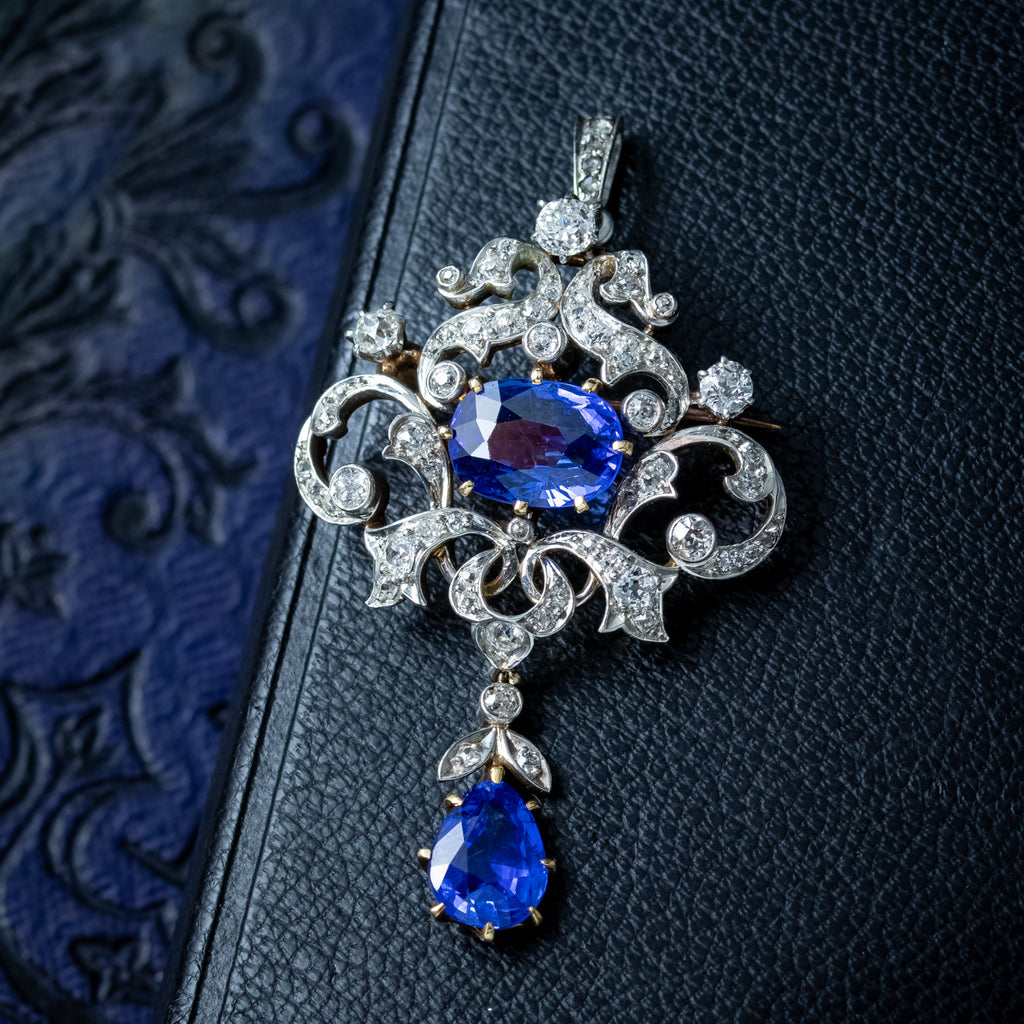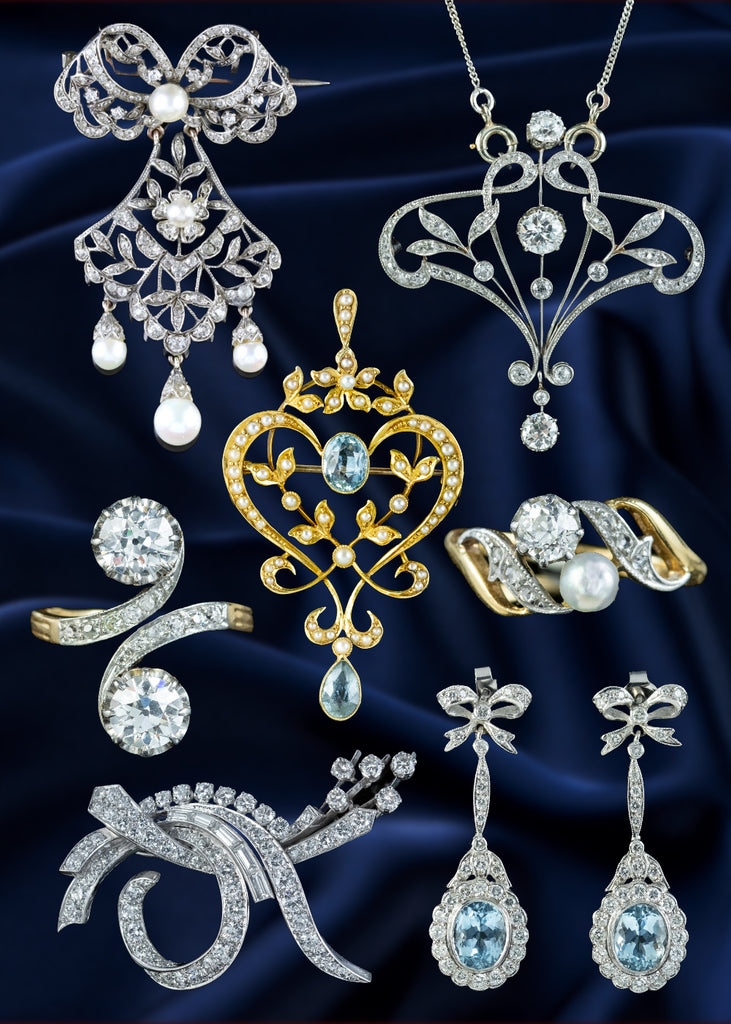A Brief History of Edwardian Jewellery
The Edwardian Era was a period of great societal advances and is often described as a romantic golden age which lasted from the coronation of King Edward VII in 1901 to the outbreak of the First World War in 1914. Although King Edward only reigned until his death in 1910 the Edwardian period also includes a portion of the reign of King George V. This contributed to the end of the convention of naming a period after the ruling monarch, as all subsequent eras were named for the events or artistic movements which were prevalent at the time, rather than the individual who wore the crown.
Although the Edwardian period lasted for only thirteen years it was a time of tremendous productivity and prosperity, which contributed to the creation of many pieces of antique Edwardian jewellery, which are tremendously popular amongst collectors today.
Victoria’s Heir

Queen Victoria, King Edward’s mother, reigned for a total of sixty three years, the longest tenure for a serving monarch until Queen Elizabeth II surpassed it with 70 years on the throne. During Victoria’s rule the British Empire experienced a time of unparalleled technological and industrial development. Although her loss was felt deeply by the people of Great Britain and Ireland she left the United Kingdom in a powerful position in the world, and Edward’s coronation was generally met with a positive reaction.
Prince Edward was already a leading member of the fashionable elite, enamoured with the fashions and art of continental Europe. He was fluent in French and German, although he reputedly still spoke English with a German accent, as Edward was the son of Prince Albert of the German house of Saxe-Coburg Gotha. As King, Edward fostered closer relations with Europe, and popular sentiment followed his lead. The styles prevalent during his reign often spanned borders, setting the stage for the first truly international artistic movement in the Art Deco period in later years.
Fin de Siècle and the Belle Epoch

Edwardian Jewellery was heavily influenced by the Fin de Siècle, a French term meaning “end of century”, which was a widespread notion of hope and new beginnings that came with the end of the 19th century. There was a general sense that the changes occurring in the world were both significant and positive, which affected the art and crafts produced, enabling decadence and exuberance of design not seen in earlier periods.
The generally sanguine nature of the art produced in the Edwardian period led to it being retrospectively known as the Belle Époque or “Beautiful Era”, and it became known as a golden age for the beauty of the art which it brought into the world. This contrast in attitude and opulence was all the more apparent to those who were looking back upon it from the horrors of World War One.
Innovations in Edwardian Jewellery
By the beginning of 20th century jewellers were using lower carat gold alloys in the creation of their pieces. These alloys were stronger than the purer gold favoured in previous eras, which meant that thinner, finer structures could be crafted. The invention of the oxyacetylene torch in 1903 further increased the jeweller’s ability to craft and bond delicate structures into durable pieces by precision heating precious metals in place.
These developments enabled the jewellers of the day to construct intricate and ornate designs which would have been too fragile to survive in previous eras. Whilst this was useful to portray the many natural and romantic forms popular in the day, such as ribbons, petals and foliate motifs, it had the most profound effect on the way gemstones were presented. In sharp contrast with the Georgian era, where gems were encased entirely in metal and foil backed to reflect light outwards, it was now possible to hold them in place with small, strong claw settings.

With a more minimal approach a jeweller could create mounts for gems that allowed light to flow through them on many planes, magnifying their natural brightness and allowing their various optical effects to truly shine. The inner fire of an opal, the bright azure gleam of a sapphire or the pure brilliance of a diamond could now be fully realised. Advances in the means and methods of cutting and shaping gems further increased the effect.
Another important innovation which found favour with Edwardian jewellers was the use of platinum. Whilst this incredibly rare and beautiful silver metal had been used before 1901 its rarity and robust nature made it fitting for the opulence of new designs, as well as being sturdy enough to make it suitable for consistent wear. Platinum was later used extensively in the Art Deco period, but many of the techniques for working with it were refined and perfected during the reign of Edward VII.
At Laurelle Antique Jewellery we are passionate about discovering and preserving beautiful pieces of jewellery from the Edwardian era. You can view our collection of Antique Edwardian Jewellery here.
Looking for something in particular? Why not reach out to our dedicated team of jewellery professionals on England: 0333 700 4500 or send us an email via enquiries@antiquejewellerygroup.com. We are always happy to help!



